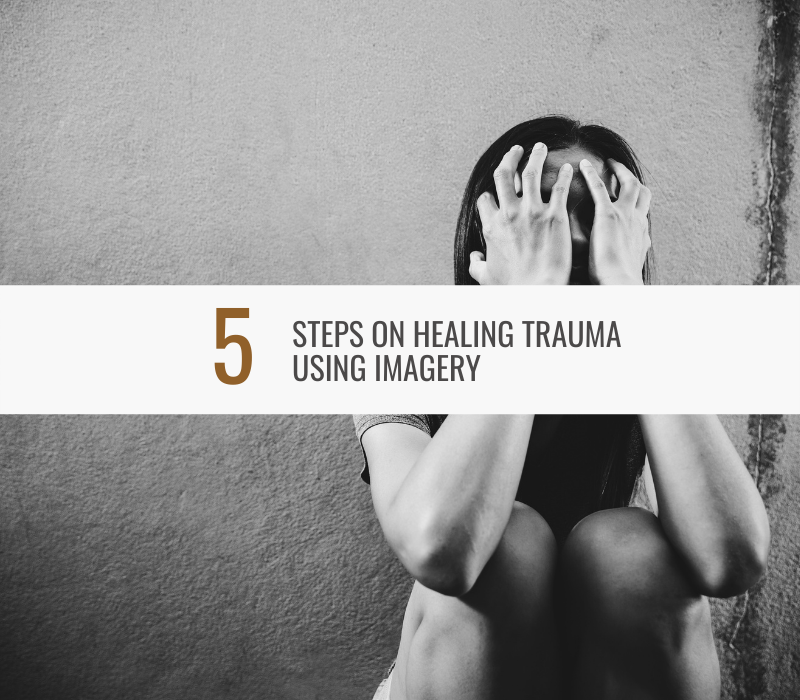
Traumatic situations can be hard to deal with, but it doesn’t have to be. In this article, we will give you some tools for healing from trauma so that you can start feeling like yourself again.
What is trauma?
Trauma is a deeply distressing or disturbing experience. It can be physical, emotional, or psychological. Trauma can occur in response to a single event or multiple events. People who experience trauma may feel scared, helpless, and alone. They may also feel numb or disconnected from their bodies and the world around them.
Trauma can have short-term and long-term effects on a person’s mental and physical health. It can lead to problems such as anxiety, depression, post-traumatic stress disorder (PTSD), and substance abuse. Trauma can also affect a person’s relationships, work, and ability to function in daily life.
There are many ways to heal from trauma. One approach is called imagery rescripting. This involves imagining the traumatic event in a different way. For example, someone who was traumatized by a car accident may imagine the accident happening in slow motion or from a different perspective. Imagery rescripting can help people to process the trauma and to develop a more positive view of themselves and the world around them.
How does the brain store trauma?
The brain stores trauma in a number of ways. First, the event is stored in the hippocampus, which is the part of the brain that helps with memory and learning. The event is also stored in the amygdala, which is the part of the brain that helps with emotions. When a person experiences a traumatic event, the amygdala becomes very active and causes the person to feel fear and anxiety.
Trauma is also stored in the body in the form of memories. These memories can be stored in the muscles, in the nervous system, and in the cells of the body. These memories can be triggered by anything that reminds the person of the traumatic event. For example, if a person was involved in a car accident, they may have a muscle memory of being afraid when they see a car coming towards them.
There are a number of ways to heal from trauma. One way is to use imagery to help the brain and body to release the memories of the trauma. Imagery involves picturing yourself in a safe place and imagining the trauma being released from your body. This can help to break down the memories of the trauma so that they are not as strong and don’t have as much power over you.

What are the five steps to healing trauma using imagery?
1. The first step is to identify the trauma that you want to heal. This can be any event or experience that has caused you pain or suffering.
2. The second step is to imagine yourself in a safe place. This can be any place that makes you feel calm and relaxed. It could be a beach, a forest, or anywhere else that you feel comfortable.
3. The third step is to visualize the trauma being healed. This can be done by imagining the event being reversed, or by imagining yourself being healed from the trauma.
4. The fourth step is to focus on the positive aspects of healing. This can include feeling lighter, happier, and more at peace.
5. The fifth and final step is to affirm your commitment to healing. This can be done by saying something like, “I am committed to healing my trauma”.
How can I do this for myself:
1. Start by finding a comfortable place to sit or lie down
Close your eyes and begin to imagine a peaceful place. It can be anywhere you want – a beach, a forest, or even your own backyard. Really allow yourself to experience this place in your mind. Feel the sun on your skin, smell the fresh air, and hear the sounds around you. Stay in this place for as long as you like.
When you’re ready, begin to imagine yourself in the situation that caused your trauma. But this time, things are different. The outcome is different. You are safe and everything is okay. Allow yourself to feel the relief and happiness that comes with this new ending. Stay in this positive image for as long as you need to.
Take some time to come back to the present moment when you’re done. Open your eyes and take a few deep breaths. Notice how you feel now – hopefully more calm and relaxed than before.
2. Close your eyes and take a deep breath
When you’re ready, close your eyes and take a deep breath. Allow yourself to relax and sink into the present moment. As you breathe in, imagine your breath going all the way down to your stomach. As you exhale, let all the tension out of your body.
Now, focus your attention on a happy memory. It can be from childhood, a recent vacation, or anything that brings you joy. Really try to feel the emotions that come with the memory. What does it feel like in your body? What do you see around you? Who is with you?
Stay with this memory for as long as you’d like. Then, when you’re ready, open your eyes and take another deep breath.

3. Picture yourself in a safe place or space
When you picture yourself in a safe place or space, it can help to reduce the feelings of anxiety and stress that are associated with trauma. It can also help to improve your mood and overall sense of well-being.
There are many different ways to do this exercise. You can picture yourself in a real place that is safe for you, or you can imagine a place that is completely fictional.
Some people find it helpful to picture themselves in a peaceful setting, such as a beach or a forest. Others find it helpful to imagine themselves in a place that is full of energy, such as a concert or a party.
find an image or picture that represents your ideal safe place or space. Alternatively, you can close your eyes and use your imagination to create the perfect safe place for you.
Once you have found or created your image, focus on it and try to relax as much as possible. Picture yourself in the scene and really try to feel the sensations associated with it. For example, if you are picturing yourself on a beach, feel the warmth of the sun on your skin and the sand between your toes.
Stay in this safe place for as long as you need to.
4. When you’re ready, imagine revisiting the traumatic event that bothers you the most
It is important to only do this when you are feeling mentally and emotionally ready. This is not a technique that should be used to force yourself to confront your trauma.
Start by picturing yourself in a safe place. This can be any place that makes you feel calm and safe. It could be a place from your childhood or a place that you have never been before.
Once you are in your safe place, start to imagine the traumatic event that is bothering you the most. Try to picture it in as much detail as possible.
As you are picturing the event, start to notice how your body feels. Do you feel tense or relaxed? Are your muscles tight or loose?
Now, start to change the scene in your mind. Imagine yourself handling the situation differently than you did in real life. For example, if you were bullied as a child, imagine standing up to the bully and telling them off.
As you are changing the scene, pay attention to how your body feels. Do you feel more relaxed now? Are your muscles loose?
Repeat this exercise as often as needed until you feel more comfortable with the trauma that is bothering you.

5. Notice how you feel now as opposed to when it originally happened
Now that you have allowed yourself to feel the feelings and emotions associated with the memory of the trauma, notice how you feel in the present moment. Do you feel better? Worse? The same?
Take a few deep breaths and pay attention to your body. Notice where you feel tightness or tension. See if you can release that tension by breathing into it.
Now, imagine the original trauma happening again, but this time, see yourself handling it in a different way. Maybe you are more assertive or confident. Maybe you are able to fight back or defend yourself. Or maybe you are able to simply walk away from the situation.
See yourself responding in a way that makes you feel empowered and in control. As you do this, notice how your body responds. Do you feel the tension easing? The tightness melting away?
Allow yourself to really feel the difference between how you felt during the trauma and how you feel now. savor this feeling of empowerment and strength. This is what healing looks like.
